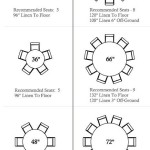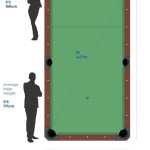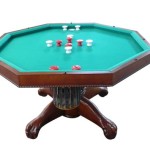How To Chalk Paint A Dining Room Table And Chairs
Chalk painting furniture, specifically a dining room table and chairs, provides a cost-effective and versatile method for transforming an entire dining space. It offers a relatively easy process to achieve a distressed, vintage, or contemporary aesthetic, depending on the chosen techniques and finishing products. This article details the necessary steps, materials, and considerations required to successfully chalk paint a dining room set, ensuring a durable and aesthetically pleasing result.
Before commencing any painting project, meticulous planning is crucial. This includes assessing the existing condition of the dining room table and chairs, selecting the appropriate chalk paint color and type, and gathering all necessary supplies. Neglecting these initial steps can lead to project delays, increased costs, and a less-than-desirable final outcome.
Preparation: Assessing, Cleaning, and Sanding
The first step involves thoroughly examining the dining room table and chairs. Identify any existing damage, such as scratches, dents, or loose joints. Minor imperfections can often be incorporated into the chalk paint finish, adding to the distressed look. However, significant damage should be repaired before painting. Loose joints can be tightened with wood glue and clamps. Deep scratches or gouges can be filled with wood filler, allowing it to dry completely before sanding smooth.
Cleaning is a crucial step to ensure proper paint adhesion. Remove all dust, dirt, grease, and grime from the furniture's surface. Use a mild detergent and warm water solution, scrubbing gently with a soft cloth or sponge. For stubborn grease or wax residue, a degreaser or mineral spirits may be necessary. Rinse thoroughly with clean water and allow the furniture to dry completely. Skipping this step can lead to the paint not adhering correctly, resulting in chipping or peeling in the future.
While chalk paint is known for its excellent adhesion to various surfaces, a light sanding is still recommended, especially if the existing finish is very glossy or smooth. Use a fine-grit sandpaper (220-grit or higher) to lightly roughen the surface. This creates "tooth" for the chalk paint to grip onto, improving adhesion and durability. Focus particularly on edges and details. After sanding, remove all sanding dust with a tack cloth or a damp cloth, ensuring a clean surface for painting.
The Chalk Painting Process: Application Techniques and Considerations
With the furniture prepared, the next step is applying the chalk paint. Selecting the right type of chalk paint is important. Several brands are available, each with slightly different properties and color ranges. Choose a high-quality chalk paint specifically designed for furniture. Consider the desired aesthetic; some chalk paints are formulated to be more easily distressed than others. Also, note the coverage rate of the chosen paint, as this will influence the amount needed to complete the project.
Before opening the chalk paint, it is crucial to stir the paint thoroughly. Chalk paint tends to settle, and stirring ensures that the pigments are evenly distributed, resulting in consistent color application. Avoid shaking the paint, as this can create air bubbles that may affect the finish.
Apply the chalk paint in thin, even coats using a high-quality brush designed for chalk paint or a foam roller. Using a brush allows for more control when painting intricate details and edges, while a roller can provide a smoother finish on larger surfaces. Work in sections, overlapping each stroke slightly to avoid streaks. Chalk paint dries relatively quickly, but allow each coat to dry completely before applying the next one. This typically takes between 30 minutes to an hour, depending on the ambient temperature and humidity.
Typically, two coats of chalk paint are sufficient for full coverage. However, depending on the color of the existing finish and the chosen chalk paint color, a third coat may be needed. Inspect the furniture after the second coat and address any areas where the original finish is still visible. Allow the final coat to dry completely before proceeding to the next step.
During the chalk painting process, avoid applying the paint too thickly. Thick coats can lead to uneven drying, cracking, and a generally unprofessional finish. If drips or runs occur, address them immediately by lightly sanding them down once the paint has dried.
Finishing Touches: Distressing, Sealing, and Waxing
One of the primary appeals of chalk paint is its propensity for distressing, creating a vintage or shabby-chic aesthetic. This process involves intentionally removing some of the paint to reveal the underlying surface. Several techniques can be used to distress chalk paint, including sanding, wet distressing, and using a chipping brush.
Sanding is the most common method. Use a fine-grit sandpaper (220-grit or higher) and gently sand along edges, corners, and raised details. Focus on areas that would naturally experience wear and tear over time. Apply varying amounts of pressure to achieve different levels of distressing. For a more dramatic effect, use steel wool instead of sandpaper.
Wet distressing involves using a damp cloth to rub away the paint while it is still wet or slightly damp. This technique creates a softer, more subtle effect than sanding. It is particularly effective on edges and details. Ensure the cloth is not too wet, as this can remove too much paint and create an uneven finish.
Once the distressing is complete, it is crucial to seal the chalk paint to protect it from damage and wear. Chalk paint is porous and susceptible to staining and scratching if left unsealed. Several sealing options are available, including wax, polyurethane, and chalk paint sealer. The choice depends on the desired level of protection and aesthetic.
Wax is the most traditional sealant for chalk paint. It provides a soft, matte finish and enhances the distressed look. Apply the wax in thin, even coats using a wax brush or a lint-free cloth. Work the wax into the paint, paying attention to details and crevices. Allow the wax to dry for approximately 30 minutes, then buff with a clean cloth to achieve a subtle sheen. Wax offers less protection than other sealants, so it may require reapplication periodically, especially on high-traffic areas like table tops.
Polyurethane provides a more durable and water-resistant finish than wax. It is ideal for dining room tables and chairs that will be subjected to frequent use and spills. Choose a water-based polyurethane, as it is less likely to yellow over time compared to oil-based polyurethane. Apply the polyurethane in thin, even coats using a brush or a foam roller. Allow each coat to dry completely before applying the next. Typically, two to three coats are sufficient. Lightly sand between coats with fine-grit sandpaper to ensure a smooth finish.
Chalk paint sealer is a specific product designed to seal chalk paint. It is typically water-based and provides a durable, matte finish. Follow the manufacturer's instructions for application. Chalk paint sealers often offer good stain resistance and are easier to apply than wax or polyurethane.
After sealing, consider applying a final coat of wax for added protection and a smoother finish. This is particularly recommended if you have used polyurethane, as it can sometimes feel slightly rough. Apply the wax as described above, buffing to a subtle sheen.
The hardware on the dining room table and chairs can also be updated to complement the new chalk paint finish. Consider replacing the existing hardware with vintage-style knobs or pulls. Alternatively, the existing hardware can be painted or cleaned to match the new aesthetic. For metal hardware, consider using a metal primer before painting to ensure proper adhesion.
When chalk painting dining room chairs, pay extra attention to the legs and rungs. These areas are subject to frequent wear and tear, so ensuring proper preparation and sealing is essential. Consider using a rubber mallet to tap the chair legs into place if they are loose. If the chairs have fabric upholstery, consider reupholstering them with a fabric that complements the new chalk paint finish. This can be a simple and cost-effective way to further transform the dining space.

How To Save Tired Dining Room Chairs With Chalk Paint Right Now

Antique Dining Table Updated With Chalk Paint Anderson Grant

How To Save Tired Dining Room Chairs With Chalk Paint Right Now

How To Update A Table With Chalk Paint I Dig

How To Chalk Paint A Table And Chairs Confessions Of Serial Do It Yourselfer

Painting A Dining Room Set With Chalk Paint The Purple Painted Lady

Diy Chalk Painted Dining Table Zevy Joy

How To Save Tired Dining Room Chairs With Chalk Paint Right Now

Breakfast Room Table Makeover Easy Chalk Paint Diy Kelley Nan

Dining Room Table And Chairs Makeover With Annie Sloan Chalk Paint Furniture
Related Posts








